Places to see the Milky Way Galaxy
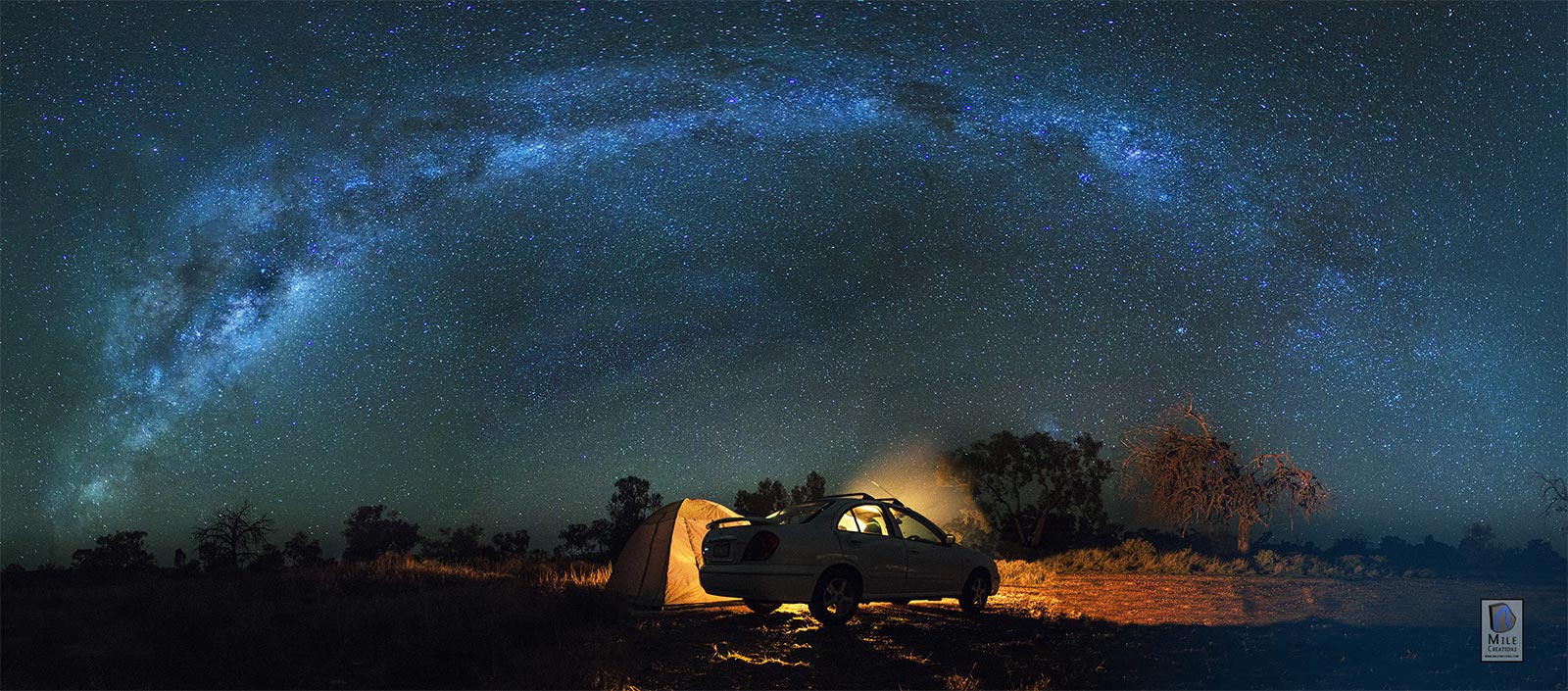
The elusive Milky Way Galaxy is one of the most interesting naked eye sights in the night sky. But its not always best seen, there might be a lot of light pollution in the area you live and the timing needs to be right. The summer Milky Way will look brighter in the Northern Hemisphere. Most noticeably you should be able to see the Great Rift in good dark skies. This dark lane in between Cygnus and Scutum is where a string of dense interstellar clouds block the view of more distant stars.
Best Times To Spot the Milky Way
Table is valid for the Northern Hemisphere.
| MONTH | BEST TIME (LOCAL TIME) | MOON PHASE* |
|---|---|---|
| January | IMPOSSIBLE | – |
| February | Difficult. Before sunrise (late February only) | 3Q to New |
| March | Difficult. Before sunrise | New to 1Q |
| April | 4 AM to Sunrise | New to 1Q |
| May | 3 AM to 6 AM | New to 1Q |
| June | 10 PM to 2 AM | New |
| July | Sunset to Midnight | 3Q to New |
| August | Sunset until 10 PM | 3Q to New |
| September | Sunset until 9 PM | 3Q to New |
| October | Difficult: Sunset (early October only) | 3Q to New |
| November | IMPOSSIBLE | – |
| December | IMPOSSIBLE | – |
*1Q means first quarter moon (half full). In its first quarter the moon rises around noon and sets near midnight. 2Q is a Full moon. It is nearly impossible to see the Milky Way when the moon is near full. 3Q is the third quarter (also half full) moon which rises near midnight and sets near noon.
Places To See The Milky Way in the USA
In the US Central Nevada, Eastern Utah, Montana, Death Valley California, Breckenridge, Colorado, Hawaii. In short, remote areas far from any light pollution afford the best view. But if you know what to look for and when and where to look you can spot the Milky Way from many places throughout the world.
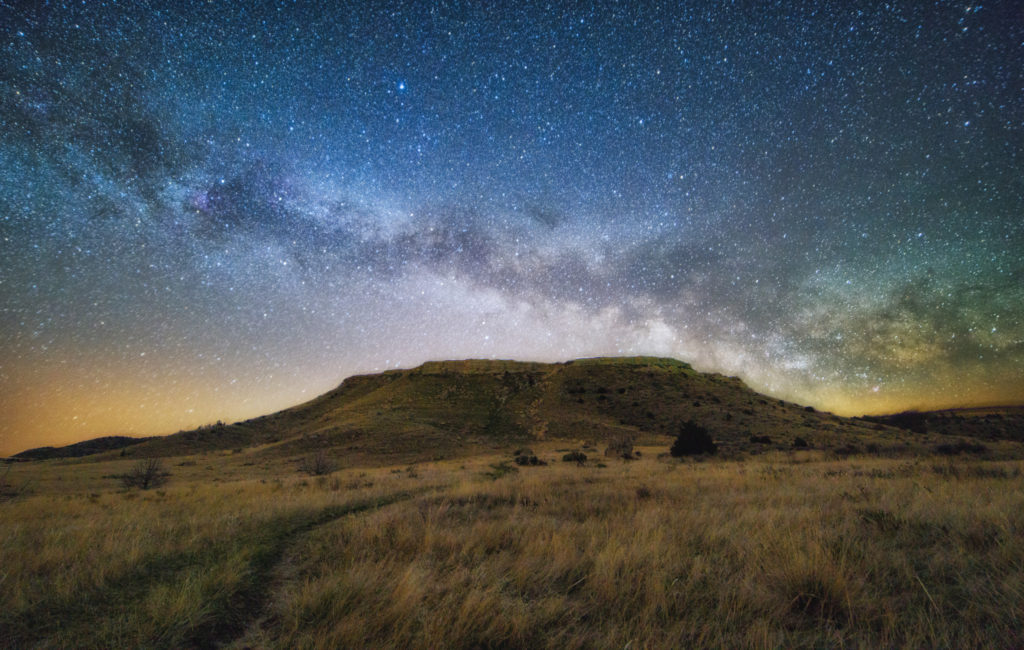
Buffalo Jump Montana at Night
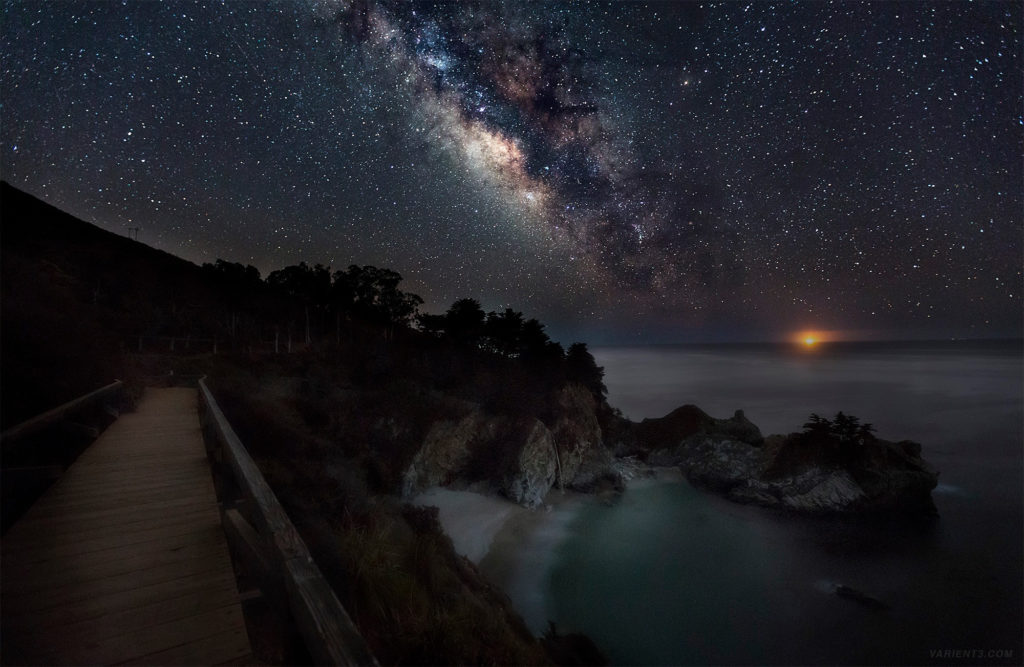
California Beach at Night
Places To See The Milky Way in Europe
Galloway Forest Park is the UK’s first Dark Sky Park. Over 7,000 stars and planets are visible with the naked eye from the Forest Park, and the bright band of the Milky Way is usually easy to see arching across the sky.
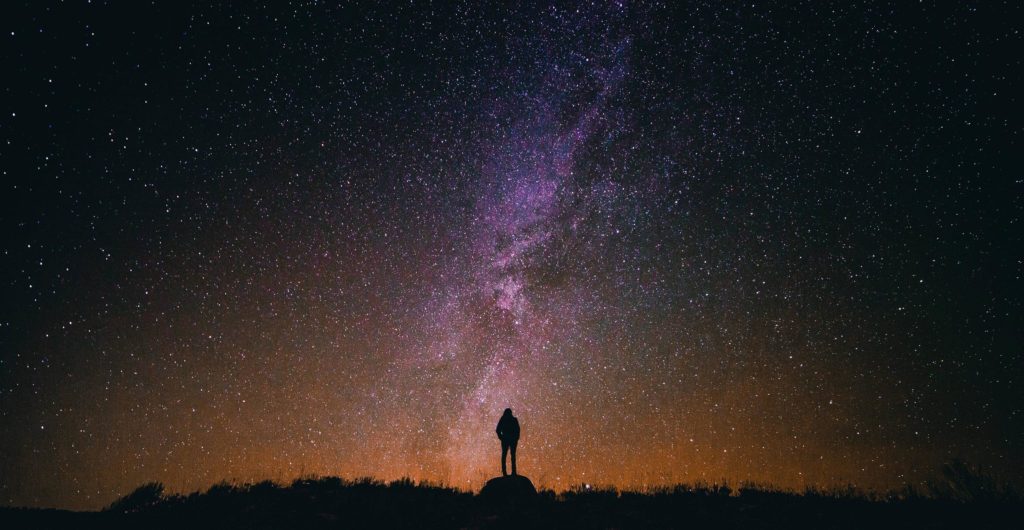
Galloway Forest Park at Night
One of the best astronomical sites in the world: Pic du Midi Observatory in the Pyrenees mountains in France. Tourists are welcomed up there and you can spend a night at the summit (they have a hotel and a guided star observation tour).
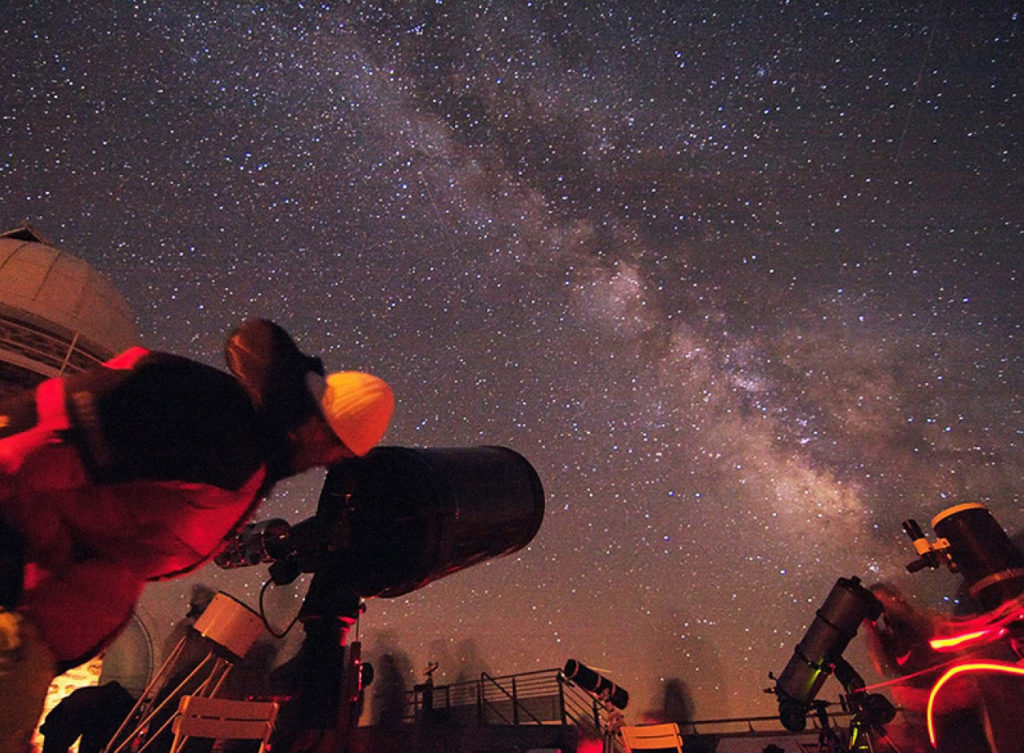
Milky Way in Pyrenees Mountains at Night
In Germany we have Naturpark Westhavelland. Despite being only 70 km from Berlin away, it is one of the darkest places in Middle Europe, equaling even Namibia. It was considered a Star Park by the International Dark Sky Association (IDA) at 2014. Even air-glow and polar light observation is possible.
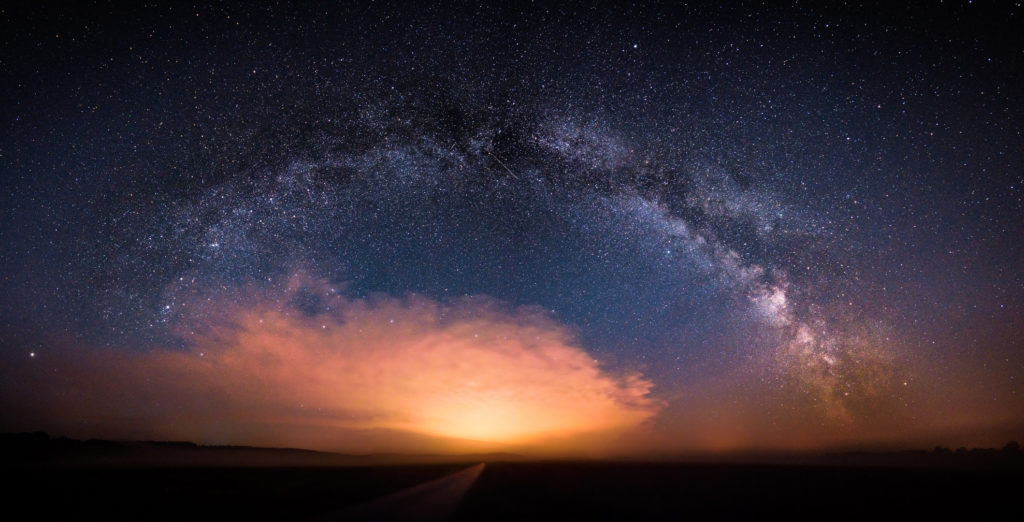
Milky Way in Naturpark Westhavelland at Night
Places To See The Milky Way in Southern Hemisphere
Australian Outback is known to offer a spectacular experience when it comes to stargazing. The sky is very dark as it is far away from any light pollution from the cities. The dark sky clearly reveals the Milky Way which is full of seemingly brighter and bigger stars. The areas that give the best sky views in the Australian outback include Uluru, Arkaloora Wilderness Sanctuary, and Warrumbungle National Park.
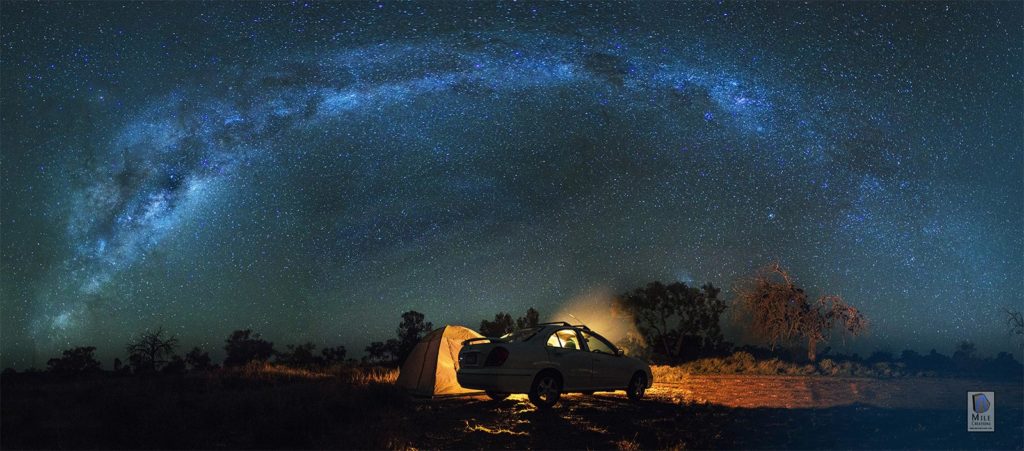
The Milky Way as seen in outback Australia
Namib Desert, Namibia. The Namib Desert is perfectly flat, which grants you a 360 degree view of the sky. Located far from any human habitation, the desert has no light pollution at all. As such the Namib Desert skies are among the darkest in the Earth and so the best for watching the stars in the night. There exists an observatory on the desert where a resident helps visitors to navigate the sky by use of a 12-inch telescope.
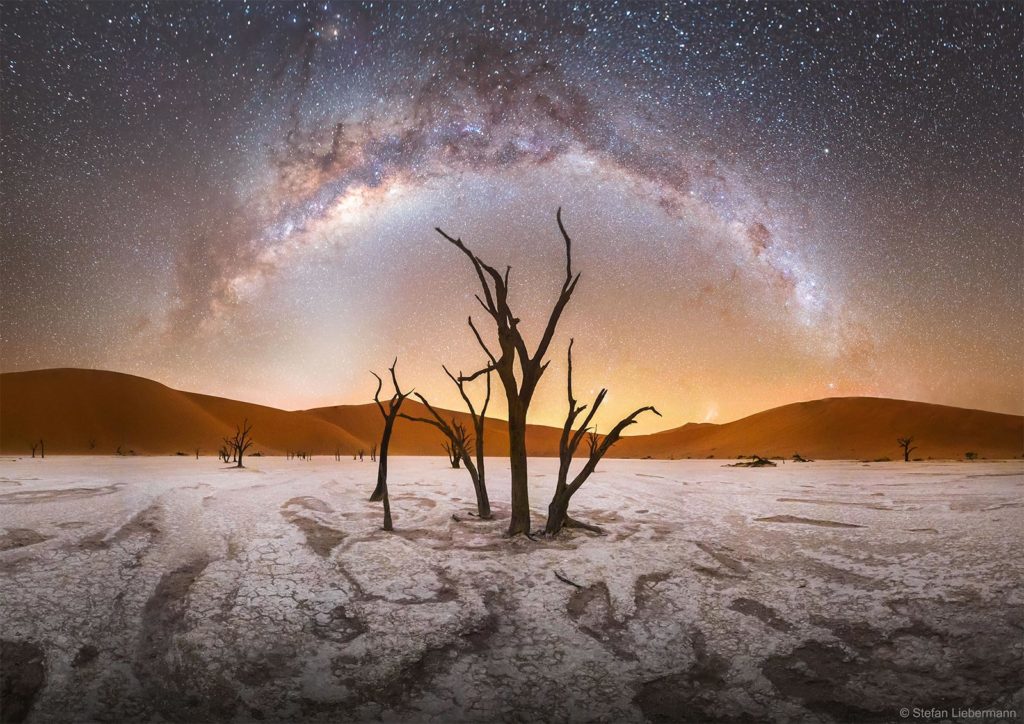
Milky Way over Namibia
How to see the Milky Way Galaxy from Earth at night with the naked eye?
‐ No telescopes, no binoculars, (just eyeglasses if you’re near sighted) and at least one eyeball. TIP: By using a cheap pair of binoculars which you can find on Amazon can increase the view experience being able to see other galaxies as Andromeda Galaxy (M31), nebulae and event comets. At the other end you can use a high end telescope that allows you to simply enter the date, time and your location, and then it points to the stars. A fat telescope like this model offers views of celestial objects that you may not be able to view with a smaller reflector.
‐ Best atmospheric conditions, a misty sky wouldn’t block it completely, nor would humidity. It would make it not as sharp, but still visible.
‐ Give your eyes at least 15-20 minutes to adapt to the darkness though. Your eyes will become more sensitive to low light level.
– A place clear of any light pollution, usually far away from any city. Check this light pollution map as a start if you can’t travel or live near the places above.
Remember, we live in the Milky Way Galaxy, this means that every time we gaze at the night sky we are looking at the Milky Way Galaxy. More exactly the spiral arm closer to the galactic center one part of the year and in the other part we see the near edge of the spiral arm farther from the galactic center. Due to nebula and dust clouds, we can’t see the center of our Galaxy (in visible light) at any time.